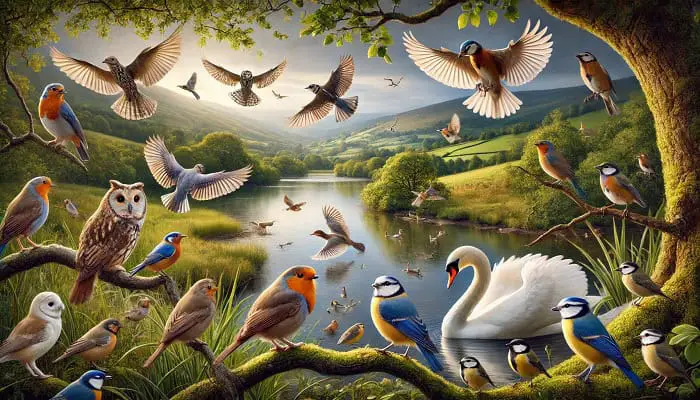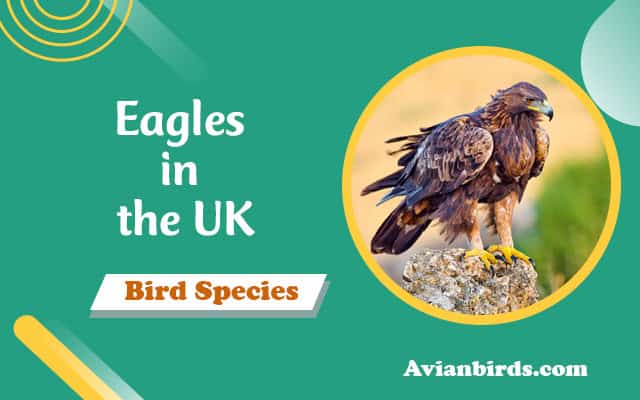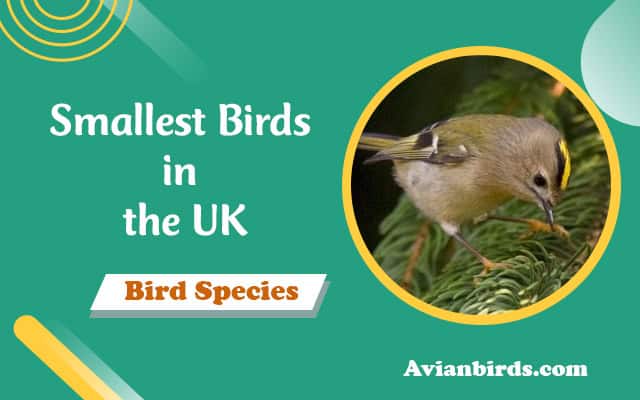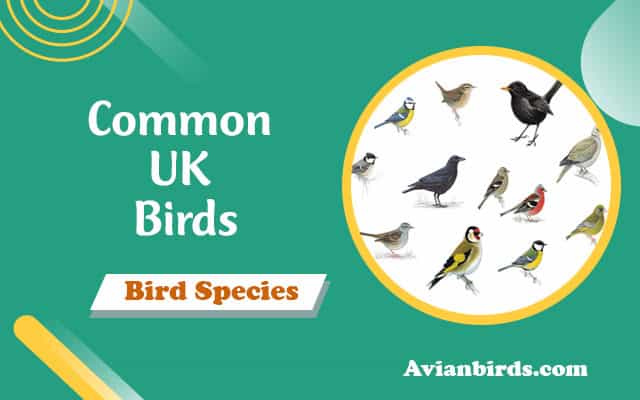26 Black and White Birds in the UK (With Photos)
You might have already seen UK black and white birds if you’re venturing outdoors in your backyard or a park along the coast. Such birds are known for their brilliantly colored feathers and interesting habits. In this guide, I will be looking at 26 black and white birds that can be found in the UK; some of them are resident breeds, while others breed further north but remain here for winter.
Main Points
- The UK is home to many black and white bird species, from the familiar magpie to the graceful avocet.
- These birds are found across various habitats, including gardens, woodlands, and coastal regions.
- Learning to identify black and white birds involves paying attention to their plumage patterns, calls, and behavior.
1. Magpie

The magpie is probably the most well-known black and white bird in the UK. With its striking appearance and bold behaviour, it’s hard to miss. The magpie’s glossy black feathers shimmer with an iridescent blue-green hue under the sunlight, making it look even more spectacular. This bird’s white belly and sides stand out in sharp contrast to its dark wings and head. Magpies are highly intelligent, often seen foraging in gardens or urban areas, and they’re known for their problem-solving abilities. They are also part of the scavenger birds family, frequently feeding on carrion or food scraps left by humans.
2. Pied Wagtail
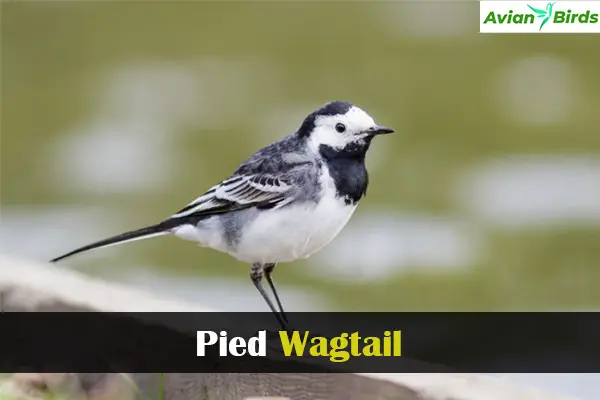
The pied wagtail is a small, elegant bird easily recognizable by its constant tail wagging, hence its name. This bird is mostly black and white, with a black head and white face, making its striking appearance easy to spot. Pied wagtails are frequently seen in urban areas, gardens, and near rivers, often walking briskly on the ground while searching for insects. Their long tails are almost always moving up and down as they walk, giving them their distinctive “wagtail” motion. These birds are highly adaptable, and you might see them roosting in large numbers during the winter months.
3. Great Tit

One of the UK’s most common and well-loved garden birds is the great tit. This species is easily recognized by its black and white head, with a striking black cap and white cheeks. Though its body is primarily yellow, its head markings give it a bold black and white contrast that makes it stand out. Great tits are frequent visitors to bird feeders and are known for their wide range of calls and songs. They are also territorial birds, often seen chasing away smaller birds from feeders or nesting areas.
4. European Oystercatcher
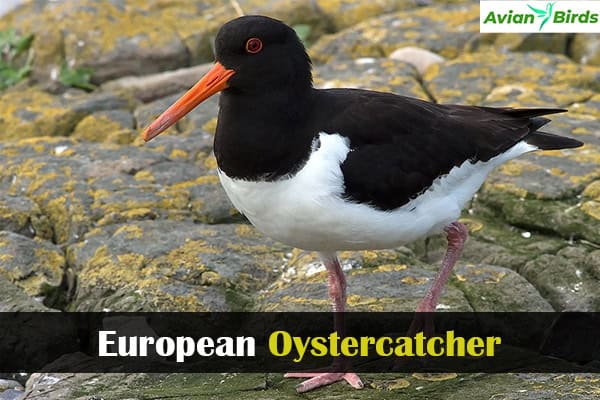
The European oystercatcher is a striking wader with a black upper body and a white underbelly. What makes this bird even more noticeable is its vivid orange-red bill, which it uses to probe the ground for shellfish and other invertebrates. Oystercatchers are usually seen along coastal mudflats and estuaries, where they forage for food. These birds are highly vocal, often heard making loud, sharp calls, especially when defending their territory or during the breeding season.
5. Razorbill
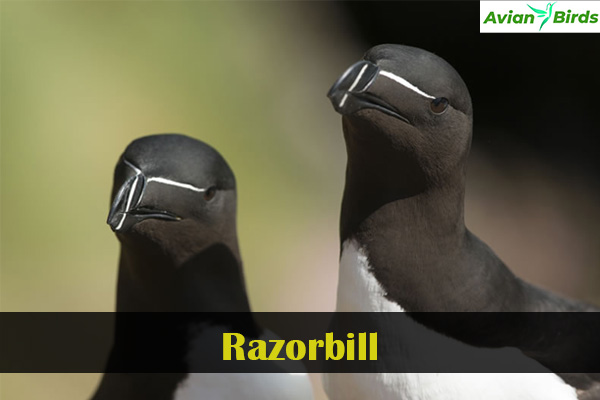
A true coastal bird, the razorbill is easily spotted on the UK’s cliffs and islands, where it nests during the breeding season. Razorbills are primarily black above and white below, with a thick, blunt bill that is perfectly adapted for catching fish. They are part of the auk family, which also includes puffins. Razorbills spend much of their lives at sea, only coming to land to breed. When not flying or diving for fish, you’ll see them perched on rocky cliffs, their sharp contrast against the grey stone making them easy to spot.
6. Avocet
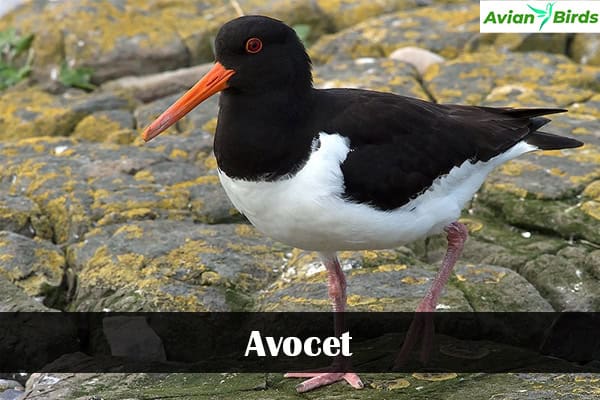
The avocet is one of the most elegant birds found in the UK, easily recognizable by its long, thin upturned bill and striking black and white plumage. These birds are often seen wading in shallow water, sweeping their bills from side to side to catch small invertebrates. Avocets are commonly found in salt marshes, wetlands, and estuaries, where they wade gracefully through the water. This species is also the emblem of the RSPB (Royal Society for the Protection of Birds), symbolizing its conservation success after being reintroduced to the UK.
7. Guillemot

Another striking black and white seabird, the guillemot, is frequently found nesting on the UK’s steep coastal cliffs. With its blackish-brown upper body and bright white underparts, the guillemot is easily spotted from a distance. Guillemots are excellent divers, using their wings to propel themselves underwater to catch fish. During the breeding season, they lay their eggs on narrow cliff ledges, making it fascinating to watch them balance on such precarious perches. Their pear-shaped eggs help prevent rolling off the cliffs, a unique adaptation to their environment.
8. Black-Headed Gull
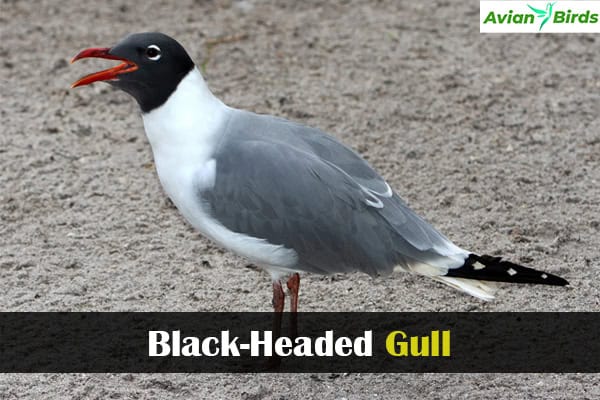
Although its name suggests otherwise, the black-headed gull only has a fully dark head during the breeding season. For the rest of the year, its head is white with a few dark markings. These gulls are small and graceful, commonly seen in urban areas, parks, lakes, and coastal regions. Their white bodies and black wingtips make them easy to spot in flight. Black-headed gulls are opportunistic feeders, often seen scavenging for food around rubbish dumps or stealing food from other birds. They are also highly social and often found in large flocks.
9. Reed Bunting

The reed bunting is a small songbird often found in wetland areas and farmland. Males are easily recognizable by their black heads, white collars, and striped bodies, making them one of the more striking black and white birds in the UK. They are often heard before they are seen, thanks to their repetitive and pleasant song. Though reed buntings prefer reed beds and marshes, they are also spotted in hedgerows and farmland during the breeding season. These birds are somewhat secretive, blending well into their wetland surroundings, so they may take a keen eye to spot.
10. Pied Flycatcher
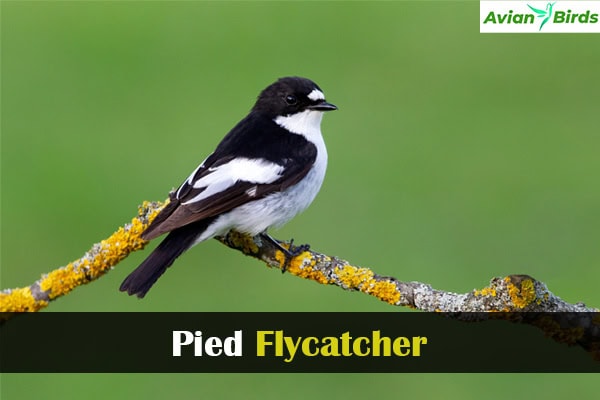
The pied flycatcher is a small bird that spends most of its time in woodlands, where it catches insects mid-air. Males are primarily black above with white underparts, making them one of the most striking black and white birds in the UK during the breeding season. Pied flycatchers are migratory, arriving in the UK in spring from their wintering grounds in Africa. They are more commonly seen in the western parts of the UK, where they nest in tree holes or nest boxes. Their agile flight and ability to snatch insects on the wing make them fascinating birds to watch.
11. Coal Tit
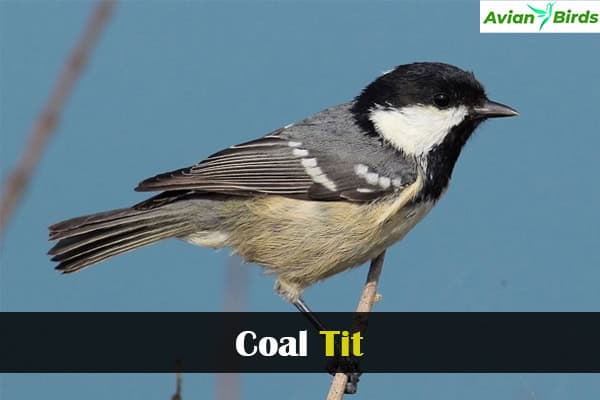
The coal tit is a small and energetic bird commonly found in coniferous woodlands, though it frequently visits gardens, especially if bird feeders are present. While not entirely black and white, the coal tit has a distinctive black cap, white cheeks, and a black bib, contrasting with its olive-grey body. These tiny birds are highly agile and often seen flitting about from branch to branch, searching for insects. In winter, they become even more reliant on feeders, often taking seeds and hiding them for later use, a behavior known as caching.
12. Carrion Crow
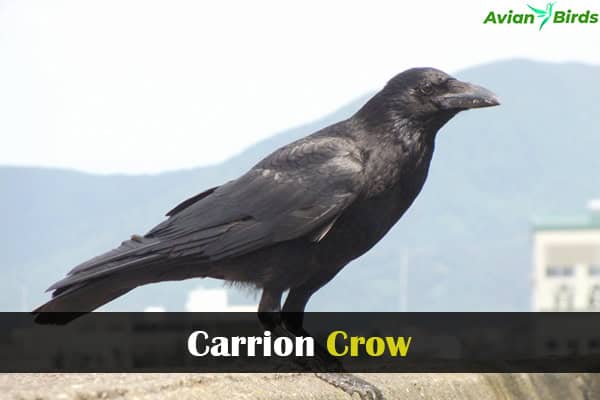
The carrion crow is a large, all-black bird often seen in farmland, woodlands, and urban areas. While not a traditional black and white bird, its glossy black plumage sometimes reflects sunlight, giving it a metallic sheen that can appear almost white in certain lighting. Carrion crows are opportunistic feeders, scavenging for food wherever they can find it. They are also highly intelligent birds, known for their problem-solving skills and ability to use tools. Carrion crows are often mistaken for ravens, but they are smaller and less bulky in appearance.
13. Black Guillemot
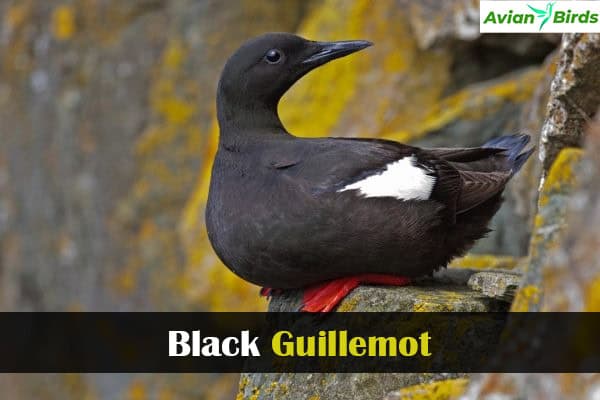
Similar to the razorbill, the black guillemot is a seabird commonly found along the UK’s northern coasts. In summer, these birds have all-black plumage with distinctive white wing patches. However, in winter, their feathers turn white and grey, helping them blend in with their surroundings. Black guillemots are skilled divers, often seen plunging into the water to catch small fish and crustaceans. They prefer nesting on rocky coastal cliffs or islands, and like other seabirds, they only come to land during the breeding season.
14. Common Shelduck

The common shelduck is a large, colorful duck with bold black, white, and greenish markings, making it one of the more striking waterfowl species in the UK. These birds are easily spotted in wetlands, estuaries, and coastal areas. The common shelduck’s bright red bill adds even more vibrancy to its appearance. They are often seen foraging in mudflats, where they feed on invertebrates. Common shelducks are also known to nest in abandoned rabbit burrows, which provides them with safe, hidden nesting sites.
15. Kittiwake
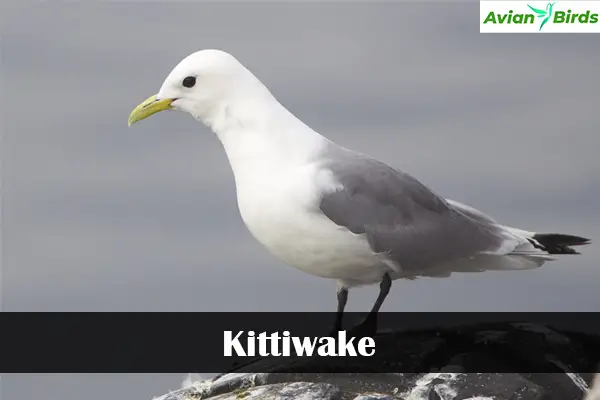
The kittiwake is a small gull that breeds along the UK’s coastal cliffs, especially in the northern regions. These gulls are white with black wing tips, giving them a clean, striking appearance. Kittiwakes are oceanic birds, meaning they spend most of their time at sea, only coming to land to breed. They are named after their call, which sounds like “kitti-wake.” Kittiwakes are often seen nesting in large colonies on narrow cliff ledges, where they create nests from mud and vegetation.
16. Long-Tailed Tit

Although primarily pink and white, long-tailed tits have black markings that make them fit into the black and white category. These tiny, social birds are easily recognizable by their round bodies and long tails, which are often longer than their entire body. Long-tailed tits are frequently seen flitting about in small flocks, moving through woodlands, hedgerows, and gardens. They build intricate, dome-shaped nests using moss, feathers, and spider webs, making them skilled nest builders. Their lively and chatty behavior makes them a joy to watch, especially when they visit garden feeders.
17. Collared Dove
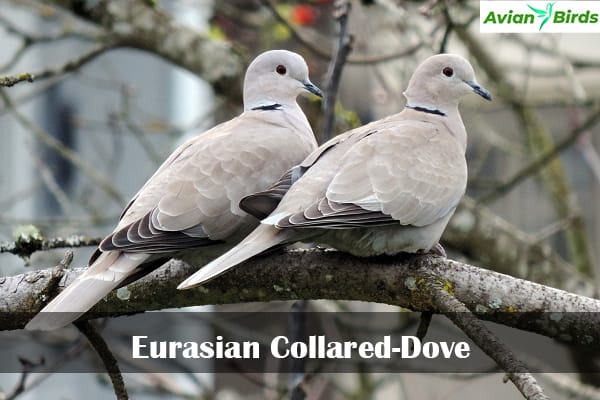
The collared dove is a familiar sight in UK gardens and parks. It has a light grey body with a distinctive black collar around the back of its neck, making it easily recognizable. These doves are often seen perched on rooftops, telephone wires, or garden fences. Although not native to the UK, collared doves have successfully spread across Europe and are now common in urban areas. Their gentle cooing is a familiar sound in many British towns and villages.
18-26. Other Black and White Birds in the UK
In addition to these well-known species, the UK is home to many other black and white birds, including:
- Dunnock: Often seen in gardens, this small bird has a soft, grey-brown body with subtle streaks, often confused with sparrows.
- Little Auk: A small seabird often seen in large flocks around the northern UK coasts during winter.
- House Sparrow: Common in both rural and urban settings, house sparrows have subtle black markings on their wings.
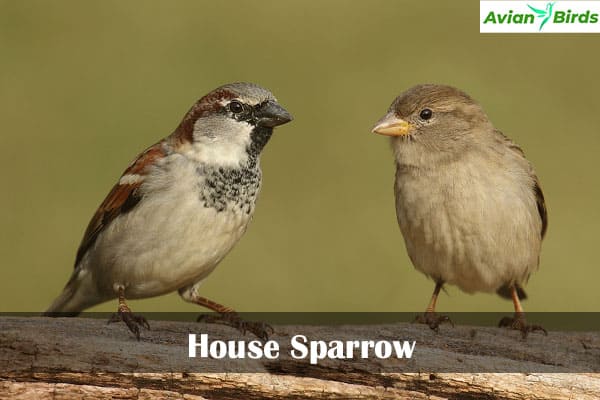
- Rook: A member of the crow family, recognizable by its greyish-white face and black plumage.
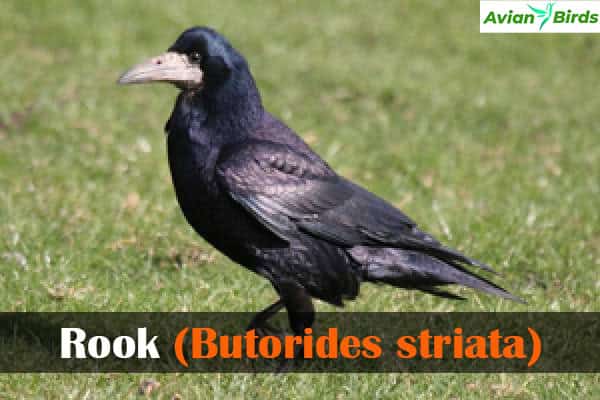
- Starling: While they may appear black from a distance, starlings’ feathers are covered with iridescent purples and greens.
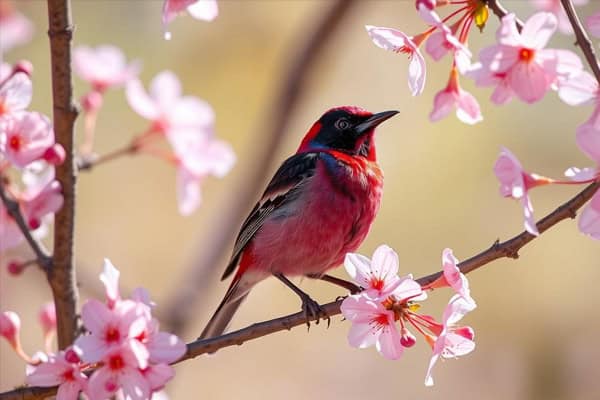
- Shag: A coastal bird, similar to a cormorant, with glossy black plumage and a distinctive greenish sheen.
- Common Gull: Slightly smaller than the herring gull, this species has a white body with grey wings and black wingtips.
- Common Tern: Known for its graceful flight, the common tern, with its black cap and white body, is often seen near water.
FAQs
Q1. What is the most common black and white bird in the UK?
The magpie is one of the most common black-and-white birds in the UK. It is frequently spotted in gardens, parks, and urban areas.
Q2. Can black and white birds be found in urban areas?
Yes, many black and white birds, such as pied wagtails, magpies, and black-headed gulls, are commonly found in urban environments, particularly in parks and gardens.
Q3. Which black and white birds live near the coast?
Coastal birds such as the razorbill, guillemot, and kittiwake can be found along the UK’s rugged coastlines, particularly on cliffs and islands.
Looking for more information on birds? Check out our articles on blue birds in Michigan, birds with red heads in the UK, and White birds in Michigan.

